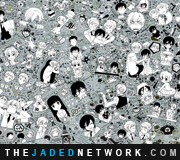-
-

30 Things About Japan
Thursday, July 2, 2009 | Posted by Jay Yay more stuff about Japan!! :P
I actually did a bit more research on some of these before posting. And for your reading enjoyment I've included some pictures as well :).
 21. College, Grades, and Finding Work
21. College, Grades, and Finding Work
In the U.S., there's a thing called GPA (Grade Point Average) which is, for the most part, a fairly big deal for undergraduate students. For most graduate schools, it plays a major role in determining whether or not you'll be admitted; for jobs it's not uncommon to use GPA on your resume. Japan has a slightly different system.
Grades don't count so much in college. Rather, what really matters is the fact that you got into a university, preferably one with a good name. While grades are still recorded, it's not so bad if you don't get straight A's or B's in your classes. So long as you pass (C and above) you will graduate and get your degree.
On the other hand, employers won't hire you if you failed all your classes either.
The US: Grades and school are almost on the same level.
Japan: School first, then maybe grades (depending on employer).
 22. Bentos ãŠå¼å½“
22. Bentos ãŠå¼å½“
Bento, or "o-bento," means "lunch box" in Japanese. These are more common than fast food places. They can be homemade (usually by your mom), or sold at almost any convenient store, market, school cafeteria, or common food stand. The price ranges from ï¿¥300 - ï¿¥2,000 ($3 - $20 USD) depending on the quality or fanciness of the bento.
 23. Masks
23. Masks
It's common practice to wear a mask over your nose and face when you have a cold so as to protect others around you from catching it too. For me, it feels a little suffocating when you wear it for a long period of time.
Lately, especially with the swine flu scare, there have been many people wearing masks outside. However, the masks used in Japan are actually designed to keep others from getting your cold, rather than to keep you from catching someone else's cold. And for the mask to actually be effective against the swine flu, it must be used properly. Many people will take it off and on during the day. You also aren't supposed to use the same mask for more than 2 hours because droplets and moisture will collect on the mask, allowing germs to collect directly on the mask you're breathing through -_-.
 24. Experts at Biking
24. Experts at Biking
Remember when I mentioned that people bike more than they drive cars? Even on rainy days, people will bike - one hand on a handlebar, and the other holding the umbrella to keep dry. That is some skill o_o.
I asked a few of my Japanese friends, and was later told that it's actually illegal to do that in Japan, but "...there are so many people who do it, the police don't bother catching you for it."
I tried it myself a few times, and nearly ended up colliding with other moving and not-moving objects on the road. In the end I decided to walk to school whenever it rained >_>.
 25. "Sorry, we don't accept credit cards."
25. "Sorry, we don't accept credit cards."
You hear this occasionally in the U.S., but you hear it all the time in Japan. It's a cash economy here - almost no one uses credit cards. ï¿¥20,000 in cash (about $200 USD), mostly emergency money for taking a taxi in case you miss the last train home etc, is the typical amount Japanese citizens carry around on a daily basis.
This points to a few things about Japanese culture. It's typically safe enough to carry around that much cash and not worry about someone stealing it. In fact, the places with the highest theft rate actually occurs where foreigners gather.
It also means that unlike the US economic system, people hold their money, see it and feel it's there, whereas US citizens are more used to the digitized system where you have an account somewhere in cyberspace that says you aren't flat broke.
 26. Shrines and Temples are Religious Sites
26. Shrines and Temples are Religious Sites
I think as tourists and foreigners we tend to forget that fact. While visiting a shrine with a Japanese friend of mine, I was taking lots of pictures (playing the photographer with my beloved Nikon D80 <3). But whenever I asked if I could take her picture, she would politely decline. It wasn't until we were about to leave that she explained it by asking me a question: you wouldn't take pictures inside a church would you?
For her, the shrine was a religious place. It would've felt very odd for her to have her picture taken there - in fact, she was a little afraid it might cause some sort of spirit to appear.
She did go on to explain that Japanese people generally did not criticize foreigners for taking pictures at temples and shrines however - they're foreigners after all *-*.
 27. Japan Likes Vending Machines
27. Japan Likes Vending Machines
At fast-food restaurants (especially the stand-up soba-udon-ramen shops) you usually place your order at a vending machine rather than with a waiter or waitress. You simply press the button with the name of the entree you want, feed it some cash (no cards!), and you get a ticket which you hand over to the nice lady at the counter.
There are also the famous hot and cold beverages ranging from regular sodas and juices to coffee and energy drinks. (On a side note, it's hard to miss the coffee vending machines were the advertisements tell you about how "hot," "burning," and "black" the coffee is. They come in super small sizes but each drink packs a load of caffeine!!)
Then there are also tobacco vending machines (yes, cigarettes of all kinds). However, you still have to get an ID card that verifies your age (legal smoking age is 20). I was told that in the past, adult novels, magazines, and also liquor used to be available in vending machines before prohibition laws were introduced.
 28. Horns = Anger
28. Horns = Anger
Pointing your index fingers out on both hands and placing both hands on either side of your head, as if pretending to be a demon (or "oni") is a sign of anger in Japan. So far this is the oddest hand gesture I've ever seen.
While I can understand that the idea probably stems from the image of a demon with horns (aka very angry), it's too cute to take seriously. A shake of an angry American fist makes a better show of anger in my opinion (and danger too).
 29. Fried Everything
29. Fried Everything
Whenever I went out for Japanese food in the states, there was usually Tempura somewhere on the menu (usually shrimp and vegetables covered in fried batter). But apparently the Japanese don't just fry tempura - they fry almost everything you can think of.
Fried fish, string beans, squash, pork (tonkatsu), potatoes (korokke), fish cakes, and fried chicken (not the McDonald's kind). I've also seen something that looks literally like a handful of nicely diced salad covered in fried batter (no idea what that kind of dish is...there isn't even an English word for it).
Fried foods are available pretty much everywhere - restaurants, school cafeterias, street vendors, and I have yet to see a convenient store or grocery store that doesn't stock at least one shelf of fried stuff.
 30. Plastic Food
30. Plastic Food
In America you see pictures of food, showcased in some nice display in front of a restaurant or in menus. In Japan, you still have menus, but instead of just pictures you also have a 3D version of all the entrees for your viewing pleasure. This goes for nearly every place you can eat in Japan - they tempt customers with delicious-looking, forever-fresh foods made out of plastic and showcased behind glass shelves. I still have a hard time believing they're fake - they look so real!
Read the first 10 Things About Japan and 20 Things About Japan.
And also a few more galleries...



Warning: Undefined array key "action" in /home1/thejaded/public_html/thejadednetwork.com/weblog/comments.php on line 17

Ongaku @ Monday, July 13, 2009 -- 4:57 pm
21. Wow, that would feel so weird. Of course, I never really cared that much about having super high grades in the US either. I just wanted to have a degree.
25. that would drive me crazy. I mean, I'm still anal and carry around cash, just in case, but if nothing ever took my debit card I would cry. I have gotten so use to it, haha.
28. Hahaha! I would burst out in laughter if I saw it and then get beating to a bloody pulp.
30. I have only seen that in a few chain stores in the US and it is kind of weird but cool. xD
Tammy @ Thursday, July 9, 2009 -- 5:51 pm
#21 - wow I always knew that schools were important in Japan but I never knew it was that big of a deal.
#24 - holy~ That is skill. I guess people just don't bike enough around here to get that kind of skill. I already have a hard enough time balancing myself at times or getting at the speed I want on hills @_@;
#30 - The plastic food trend seems to be creeping up more and more in food service IMO.
-
 Copyright © 2025 theJADEDnetwork.Com
Copyright © 2025 theJADEDnetwork.ComAll Rights Reserved
Use of this Site and/or any of its materials signifies
user agreement to the TJN Terms and Conditions














































